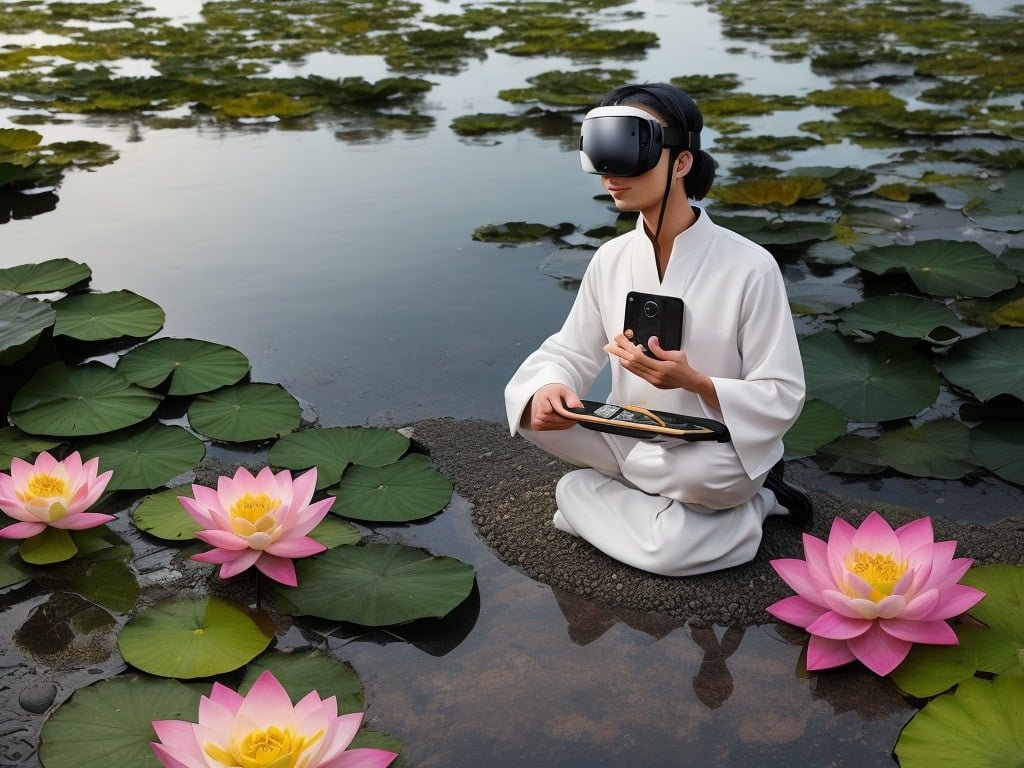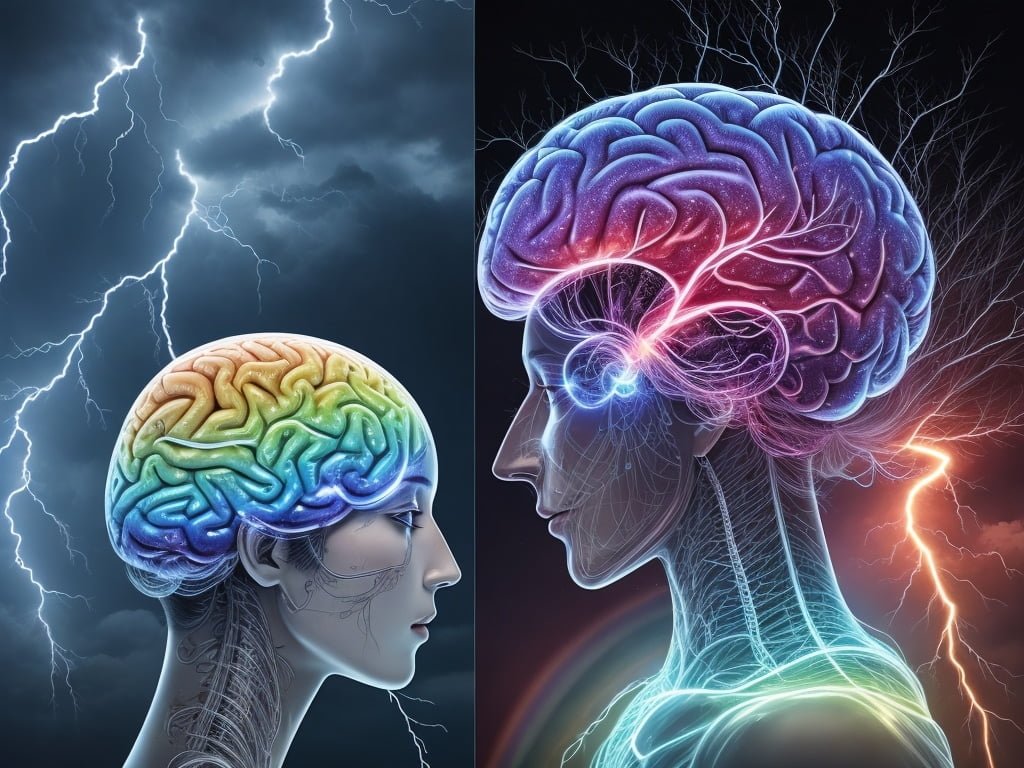Ever found yourself lost in a daydream while your life is happening right around you? That’s something we all experience, but it’s not something we have to accept lying down. Mindfulness is a practice that’s gaining traction all over the world. But what is it really? Is it just a trendy buzzword, or is there some actual science to back it up? Let’s unravel the mystery together, and don’t worry, we’ll keep the jargon in check!
Introduction: Mindfulness for the Everyday Joe and Jane

You’ve probably heard the term “mindfulness” being tossed around lately. It’s become a go-to recommendation for stress, anxiety, or simply living a more fulfilled life. But what’s the real deal here? In this part, we’ll strip away the fancy lingo and dive into what mindfulness is all about. And, oh boy, are you in for a treat!
Mindfulness is all about being present in the moment, embracing our feelings, thoughts, and sensations as they come. Think of it as a warm embrace for your soul. Sound a bit “out there?” Stick with me, and we’ll explore the science that makes it as real as your morning coffee.
Section 1: Mindfulness Demystified – The Brain Connection

The Neuroscience of Mindfulness
Before we delve into the details, let’s take a brief detour into our brain’s fascinating world. Imagine your brain is like a bustling city, with thoughts, emotions, and reactions all zooming around like cars on the highway.
Mindfulness acts as a traffic controller, helping to slow down the rush and allowing you to focus on what’s essential. How does it do this? Grab your virtual lab coat, and let’s find out!
1. Brain Waves and You: Believe it or not, our brain communicates using electric signals called brain waves. Mindfulness helps to tune these waves to a frequency that’s more in line with relaxation and focus. It’s like tuning your radio to a station that only plays your favorite songs.
2. The Amygdala and Emotion Control: Ever heard of the fight-or-flight response? That’s your amygdala at work. Mindfulness practice has been shown to calm this little part of your brain, helping you react more thoughtfully rather than impulsively. It’s like having a wise old friend whispering over your shoulder, guiding you through life’s ups and downs.
3. The Pre-frontal Cortex and Decision Making: The pre-frontal cortex, the part of your brain that deals with decision-making and self-awareness, gets a significant boost from mindfulness practice. Imagine this part of your brain as a wise and influential CEO, always guiding the company (that’s you!) in the right direction.
What’s more, these changes are not just a fleeting experience. Long-term mindfulness practice can literally rewire your brain. It’s like going to the gym, but for your mind. Over time, those emotional muscles become stronger and more resilient.
You still with me? Great! We’ve only scratched the surface, and the ride’s about to get even more exciting.
Section 2: The Psychology of Mindfulness – A Healing Touch
Mindfulness and Mental Health
Mindfulness isn’t just some mystical concept; it’s grounded in hard science and can be a lifeline for mental health. How, you ask? Buckle up, as we explore this fascinating road.
1. Stress Reduction: Feel like a pressure cooker ready to blow? Mindfulness turns down the heat. By focusing on the present, mindfulness takes the edge off life’s challenges, allowing you to breathe, relax, and regain control. It’s like a soothing lullaby for the soul.
2. Battling Anxiety and Depression: Struggling with anxiety or depression? You’re not alone, and mindfulness could be your ally. Various studies have shown that mindfulness can reduce symptoms and improve overall well-being. It’s not a magic wand, but it’s a step in the right direction.
3. Improving Self-esteem and Body Image: Ever feel down about yourself or how you look? Mindfulness helps you appreciate yourself just as you are. By fostering a non-judgmental awareness, you learn to embrace your unique self, imperfections and all. It’s like looking in the mirror and seeing a friend, not a critic.
4. Enhancing Relationships: Imagine improving your connections with family and friends through mindfulness. By being present and attentive, you foster empathy and understanding. It’s like watering a garden; the more you nurture it, the more it blooms.
Mindfulness Techniques and Applications
So, you’re sold on the idea of mindfulness, but how do you actually practice it? Worry not; you don’t need to become a monk or live in a cave. Here’s a glimpse into the “how-to” of mindfulness.
1. Mindful Breathing: This is where it all starts. By focusing on your breath, you anchor yourself in the present. Think of it as a mini-vacation for your mind, anytime, anywhere.
2. Body Scan: Ever felt disconnected from your own body? A body scan reconnects you, helping you understand what’s happening inside. It’s like having a conversation with your own body, learning its likes and dislikes.
3. Guided Meditation: Not sure how to begin? Guided meditations can be a friendly hand to hold. From apps to online videos, they walk you through the process. It’s like having a personal mindfulness coach right in your pocket.
4. Mindful Eating: Ever inhaled your lunch without tasting it? Mindful eating slows you down, helping you savor every bite. It’s not just about the food; it’s about the experience.
Are you ready to give mindfulness a try? There’s more to explore, and the journey is as rewarding as the destination.
Section 3: Mindfulness in the Modern World – A Growing Trend

We’re living in a fast-paced world, where our minds are often scattered and fragmented. But mindfulness is making waves, transforming how we live, work, and play. Why is it catching on like wildfire? Let’s unravel this trend.
Mindfulness in Education
Education isn’t just about grades and exams; it’s about nurturing minds. Mindfulness is sneaking into classrooms, becoming a handy tool for both teachers and students. What’s it all about?
1. Enhancing Focus and Concentration: Imagine a classroom where students are focused and engaged. Mindfulness helps achieve this by training the mind to be present. It’s like sharpening a pencil, making it ready for the task at hand.
2. Reducing Stress and Anxiety: Tests, homework, peer pressure – school can be a stress factory. Mindfulness acts as a stress-buster, providing a calm refuge for both students and teachers. It’s like a soothing breeze on a sweltering day.
3. Fostering Emotional Intelligence: Empathy, compassion, self-awareness – these are the unsung heroes of education. Mindfulness helps cultivate these qualities, nurturing well-rounded individuals. It’s like planting seeds that grow into beautiful trees.
4. Supporting Special Needs: For students with special needs, mindfulness offers a unique support system, helping them navigate the unique challenges they face. It’s like a guiding star, lighting the way.
Mindfulness in the Workplace
The workplace is not just about deadlines and meetings; it’s about people. Mindfulness is changing the way we work, creating healthier, more vibrant workplaces. Curious to know how?
1. Boosting Productivity: A focused mind gets more done. Mindfulness helps clear the clutter, allowing for better concentration. It’s like cleaning your desk, making room for creativity and efficiency.
2. Enhancing Employee Well-being: Burnout, stress, discontent – these are the ghosts haunting many workplaces. Mindfulness acts as an exorcist, creating a more harmonious environment. It’s like tuning an orchestra, making beautiful music together.
3. Fostering Teamwork and Communication: Mindfulness teaches us to listen and understand, essential ingredients for teamwork. It’s like building a bridge, connecting ideas and people.
4. Leadership and Mindfulness: Leaders who practice mindfulness tend to be more empathetic and strategic. It’s like having a compass, guiding the ship through storms and calm waters alike.
Mindfulness in Healthcare
Healthcare isn’t just about medicines and surgeries; it’s about healing. Mindfulness is playing a vital role in patient care and even among healthcare providers. Here’s how:
1. Pain Management: Chronic pain can be a relentless enemy. Mindfulness offers a way to manage pain without just relying on medication. It’s like learning to dance in the rain rather than waiting for the storm to pass.
2. Supporting Mental Health Treatments: Alongside therapy, mindfulness offers an additional support system for mental health challenges. It’s like having an extra layer of insulation against the cold.
3. Healthcare Provider’s Well-being: Doctors, nurses, therapists – they all need care too. Mindfulness provides a space for self-care among healthcare providers. It’s like a well-deserved break in a demanding job.
4. Mindful Recovery: Recovery from illness or surgery is not just physical; it’s mental too. Mindfulness supports a more holistic recovery process. It’s like having a gentle hand to hold during a tough journey.
So, there we have it, a whirlwind tour of how mindfulness is shaping our world. But wait, there’s more to uncover. Next up, we’ll delve into the future of mindfulness and where this exciting journey might lead us.
Section 4: The Future of Mindfulness – The Road Ahead

The beauty of mindfulness is that it’s ever-evolving, growing with us as we navigate through life’s twists and turns. What might the future hold for mindfulness? Grab your crystal ball, and let’s take a look!
Emerging Technologies and Mindfulness
Technology and mindfulness may seem like strange bedfellows, but they’re joining hands in surprising ways. Here’s how:
1. Mindfulness Apps: With the rise of smartphones, mindfulness is just a tap away. Guided meditations, reminders, tracking – it’s like having a personal mindfulness guru in your pocket.
2. Virtual Reality (VR) Meditation: Imagine meditating on a mountaintop without leaving your room. VR offers immersive mindfulness experiences, taking practice to a whole new level. It’s like stepping into a dream, yet being fully awake.
3. Wearable Gadgets: Wearables that track heart rate, breath, and even brain waves are becoming allies in mindfulness practice. It’s like having a mirror, reflecting your inner state.
4. Artificial Intelligence and Personalized Mindfulness: Tailored mindfulness practices based on your unique needs? Artificial Intelligence makes this possible. It’s like having a mindfulness program designed just for you.
Mindfulness and Public Policy
Governments and organizations are waking up to the benefits of mindfulness. Could it become a part of public policy?
1. Mindfulness in Schools: Some countries are embracing mindfulness in education, promoting emotional well-being. It’s like adding a vital subject to the curriculum.
2. Workplace Well-being Programs: Employers are recognizing the value of mindfulness in enhancing employee wellness. It’s like planting a garden in the concrete jungle of work.
3. Healthcare Integration: Mindfulness as a complementary therapy in healthcare is gaining ground. It’s like adding a gentle touch to the medical world.
The Challenges and Ethical Considerations

Every silver lining has a cloud, and mindfulness is no exception. What might be the bumps on this road?
1. Accessibility and Inclusivity: Ensuring that mindfulness is available to everyone, regardless of socio-economic background, is a challenge. It’s like building a bridge that everyone can cross.
2. Commercialization: With popularity comes commercialization, and mindfulness is no stranger to this. Finding authentic practices is essential. It’s like sifting gold from the sand.
3. Ethical Teaching: Ensuring that mindfulness is taught with integrity and understanding its cultural roots is vital. It’s like nurturing a tree, honoring its roots while appreciating its growth.
There you have it, dear reader, a journey through the fascinating world of mindfulness. From its humble origins to its promising future, mindfulness is more than just a buzzword; it’s a way of life. It’s like a gentle river that flows through our lives, nourishing our minds, hearts, and souls.
So, are you ready to dip your toes into the calming waters of mindfulness? The river is always there, waiting for you to join in its peaceful flow.
Whether you choose to explore mindfulness further or simply enjoyed the ride, I hope this guide has brought you insights, understanding, and perhaps a moment of peace.
Until our paths cross again, be mindful now.


